The GPS collars we use on leopards and brown hyaenas stay on the animals for 455 days and then they drop off automatically. When the collar reaches day 455, a small pyrotechnic charge is fired and the pin holding the collar is released. We do not have to recapture animals a second time which is less stressful for the animals and easier for us.
Sometimes though recovering the collars is not a simple process. If a collared animal moves out of the area, we can not pick up the signal to track the collar. The batteries on some of our collars have failed before the drop off date which makes collar recovery near impossible. If the collared animal was killed illegally by humans then people may have deliberately damaged, destroyed or disposed of the collar.
Luckily recovering a collar is not the only way to recover the important data. With the leopard, baboon and brown hyaena collars we can download GPS data, activity data and interaction data using a UHF (ultra high frequency) receiver. We try to download regularly throughout the collar's life so we do not risk losing all the data if we are unable to collect the collar at the end. Sometimes these attempts to download the data result in unexpected surprises. Last week the predator team was out with Sam trying to track Pimms. Unfortunately they did not communicate with Pimm's collar but they did see another leopard crossing the road on their drive home!
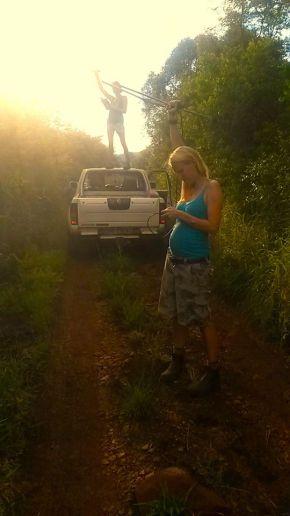
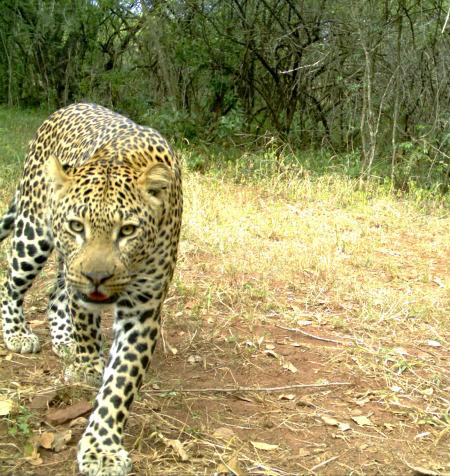
The leopard collars have an additional mechanism which helps us to receive data. When a leopard moves into an area with cell phone reception they send text messages listing half of their GPS points to our base station.
We can also access all the data stored on board if the collar is recovered at the end. Recovering a collar is also of great value to us financially. Any recovered collars can be recommissioned for future usage at about half the price of buying a new unit.
Before 2014 the Primate and Predator Project recovered some of the collars which fell off but unfortunately all the collars we found were on animals which were killed by people before the collar's 455 days were up.
There have been several collars which fell off which we never recovered and the fate of the animal remains unknown. One example was Anakin, a leopard we collared in February 2013. After a few months of wearing the collar he disappeared from our camera trapping grid and was never seen again. We downloaded some data from him after a couple of months with the collar, but after that no further communication followed either by UHF or by SMS. Anakin has never been sighted again and his collar should have fallen off in May 2014 but we were unable to recover it.
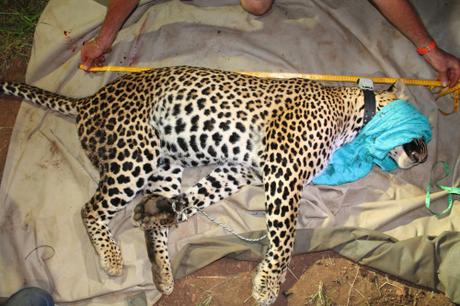
At the moment we are searching for O'Malley, a collared male leopard who used to be a regular on our camera trapping grid. He has not been photographed since the end of June 2014 and we haven't received any communication from his collar since that time.
Last year we recovered our first collars from animals that are still alive and well! Chomma, the brown hyaena, wore his collar for the full duration and in June 2014 it dropped off. Katy was able to pick up a signal from the collar using the UHF. With permission from local landowners, Katy and a team of three predator research assistants hiked up the northern slopes of the Soutpansberg Mountains to the last recorded GPS point. Close to the point, we discovered a brown hyaena den, which Chomma was using regularly. Very few people have seen a brown hyaena den in the Soutpansberg Mountains. The entrance was a hole going deep into a pile of large boulders. All around the entrance lay hyaena scats and bones. It was exciting to be so close to where Chomma and other hyaenas slept. While Sophie and Katy collected scat samples for analysis, Shannon and Tessa followed the sound of the VHF signal that the collar was emitting. They got to a point where the sound was loud in all directions which indicates that they were standing very close to the collar. They were in a large grassy area and knew they would have to scour under every clump of grass. Feeling the enormity of the task, Shannon took a moment to lean against a tree, as she looked down the collar lay on the ground by her feet. It had been chewed on by hyaenas after it fell off but otherwise it was in perfect condition. It was the first collar the project recovered from a living animal. All the data has been extracted and the collar has been returned to the manufacturer for recommissioning.
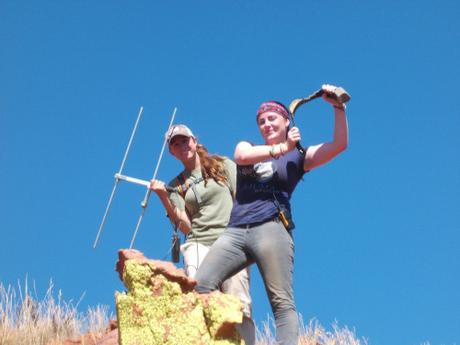
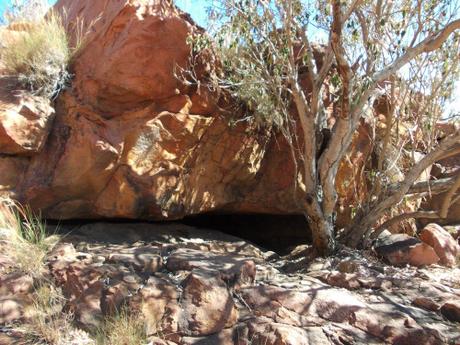
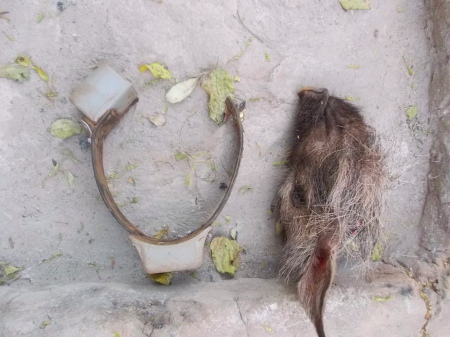
BB, the leopard, was the next animal due to drop his collar last year. The expected drop off date was mid-August, however despite many attempts to track him with the UHF and to communicate with his collar via SMS, the last data we could get was several months prior. We still photographed BB on our camera traps wearing his collar regularly so we suspected that the reason we weren't receiving data was that the collar's battery had stopped working early. If this was the case finding the collar was going to be extremely challenging. Leopards cover huge areas and walk in places that people do not frequent. Finding a collar that wasn't emitting a signal would be like finding a needle in a haystack. To our complete surprise, we found the needle! The day the collar was due to fall off we received a phone call from a neighbouring landowner. His worker had discovered a collar on the road next to the remains of a bush pig kill. We rushed over to meet the worker at the gate. He greeted us with a collar in one hand and the head of a wild pig in the other. It was BB's collar and as we suspected it had stopped working. Finding it was an amazing stroke of luck and we are indebted to our neighbour for returning it to us! Another collar recovered off a living animal! Result.
Last September the search for the remaining collared hyaenas continued. Bill, one of the individuals we located earlier in the year from a helicopter, had become elusive again. Katy and two predator assistants took to the air in a helicopter to search for her. We flew over Bill's territory listening carefully for a VHF beep. The pilot circled the area until we heard the strongest sound and then we took a GPS point. The next day we went to the point on foot. As we searched the bush we found a snare in the undergrowth which we removed. Philippa turned around and spotted the collar lying in a bush. The collar had been removed from Bill after she had died. As there was no evidence of Bill's body we do not know exactly how Bill died but we believe it was human induced.
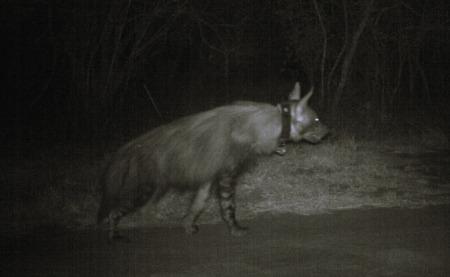
With the recovery of Bill's collar we broke our streak of recovering collars off live animals which reiterated the need for greater community involvement to curb human-wildlife conflict.
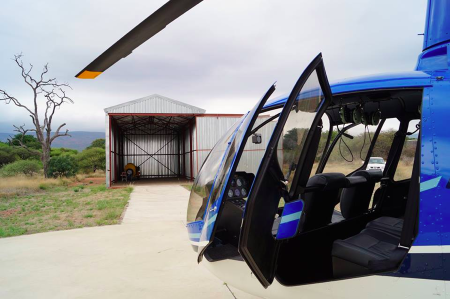
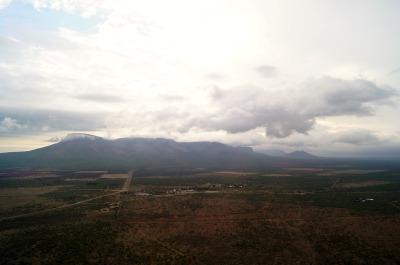
Last December two more collars were due to drop off: Hermione, the last collared brown hyaena, and Jenny, a female leopard. At the end of November our wonderful neighbour and helicopter pilot, Jannie Moulman, flew for us again to search for Hermione. We searched the last remaining areas within the logical and achievable vicinity which we hadn't checked previously. Nothing. Hermione's collar has either stopped working or she moved a long way out of the area, which is possible for a brown hyaena. Unfortunately Hermione's collar and the data it contained has not been recovered.
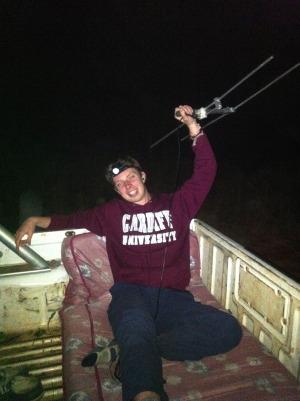
Jenny has also proved a challenge. Her situation was very similar to BB's. We were still photographing her with her collar on regularly but we were not able to communicate with the collar suggesting the battery may have failed prematurely. We searched for her collar after it fell off but it is likely that the battery was dead.
In 2015 two leopards (O'Malley and Pimms) and one baboon (Melissa) have GPS collars due to fall off. We hope that we will recover the data from these animals and eventually the collars as well. We have learned very quickly that even with advanced technology collecting GPS data from large predators is seldom an easy job!
